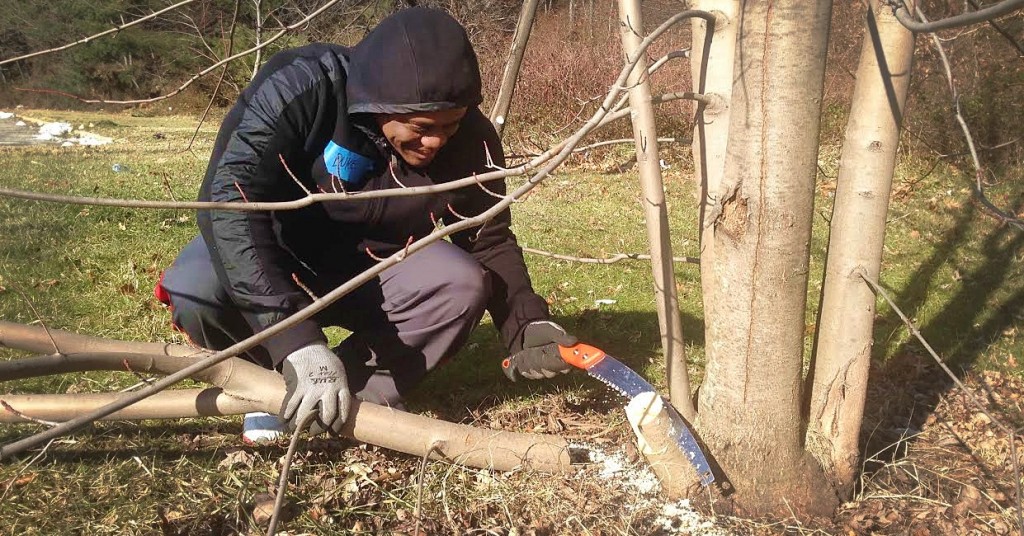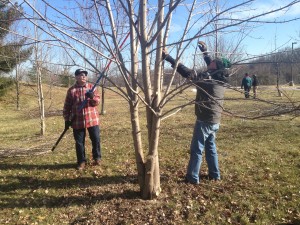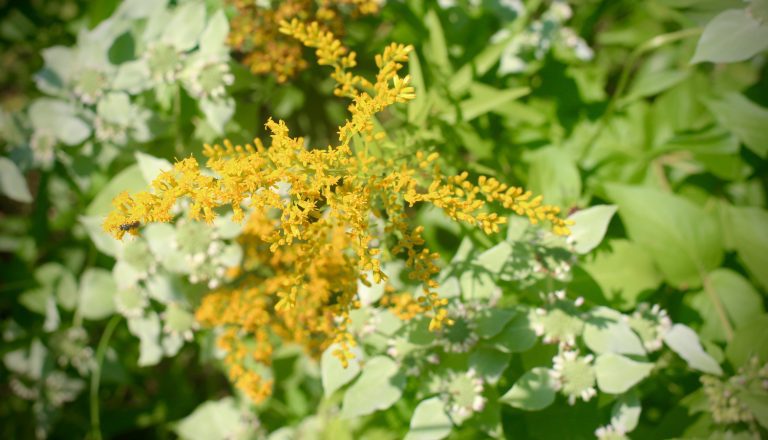Learn to Prune Trees Like a Pro
To help you learn how to care for the trees at your home or on your street, we are announcing a series of all-new tree pruning workshops. These free events will teach you what you need to know, and enable you to help Blue Water Baltimore maintain some of the several thousand trees we have planted over the last decade.
Why prune trees?
 It’s easy to forget just how important it is to maintain young trees after they are planted. After all, trees in forests and parks survive and reproduce on their own just fine. Why meddle with how your tree is naturally growing?
It’s easy to forget just how important it is to maintain young trees after they are planted. After all, trees in forests and parks survive and reproduce on their own just fine. Why meddle with how your tree is naturally growing?
First, living in an urban area means that there are constraints on tree size and shape where there wouldn’t otherwise be. That is to say, we don’t always have the luxury of letting trees grow “naturally.”
- For example, the beautiful redbud in your backyard may start to send up multiple trunks and take on a shrub-like form that affects your ability to mow your lawn underneath it.
- Or maybe the red maple down the block from you has small lower limbs that prevent pedestrians from walking on the sidewalk comfortably.
Second, even when completely “natural,” a tree can sometimes cause difficulties for itself while growing.
- Because urban trees have higher visibility than those in parks or forests, we are actually at an advantage when it comes to diagnosing and treating any health problems a tree may have.
- We can trim back a branch that is turned inwards and causing damage to other branches, remove a competing trunk that may make the tree more susceptible to splitting, or simply take off diseased or dead limbs.
Ok, ok, you’ve convinced me. When can I get started?
 Although it is a surprise to many, late winter is one of the best times to prune most species of trees.
Although it is a surprise to many, late winter is one of the best times to prune most species of trees.
- Right now, trees are still dormant and haven’t yet started putting their energy into growing for the spring.
- After pruning, once the soil and air temperatures warm, trees will automatically redirect their resources into the new structures you have created for them.
- They will also heal themselves faster than if you remove branches in fall or early winter.
Late winter is also a terrific time for pruning because the risk of damage from insects and other pests is low. When you prune, you are opening a wound in the tree’s armor—its bark—that can leave it vulnerable to disease, fungal infection, insect damage, and a myriad of other invaders. Right now, most of those threats are not present, so the tree gets a head start on defending itself.
Lastly, winter offers better opportunity to examine the structure and growth of the tree and make better decisions about what limbs to remove. Without foliage obstructing your view, the branching pattern of the tree is much more obvious and you can easily see which parts of the tree might need to be removed or pruned back.
Well, I’m ready! Show me how to do it!
First, sign up right away for one of our winter pruning workshops for a live demonstration and hands-on practice. The next event is this weekend, and our Saturday workshops have limited space so sign up today!
Tune in next week for our next blog post for great tips on safely and conscientiously pruning your trees.

